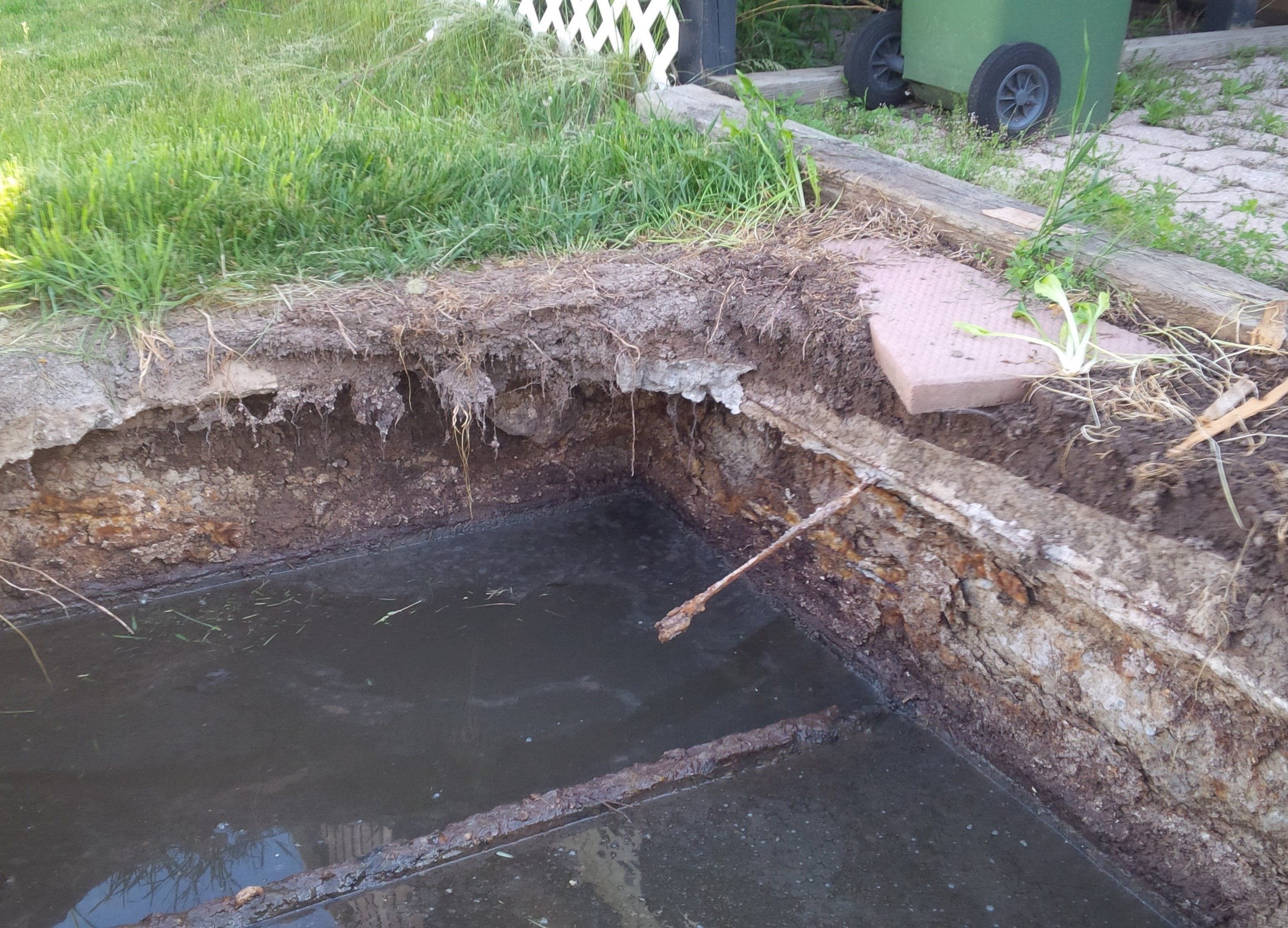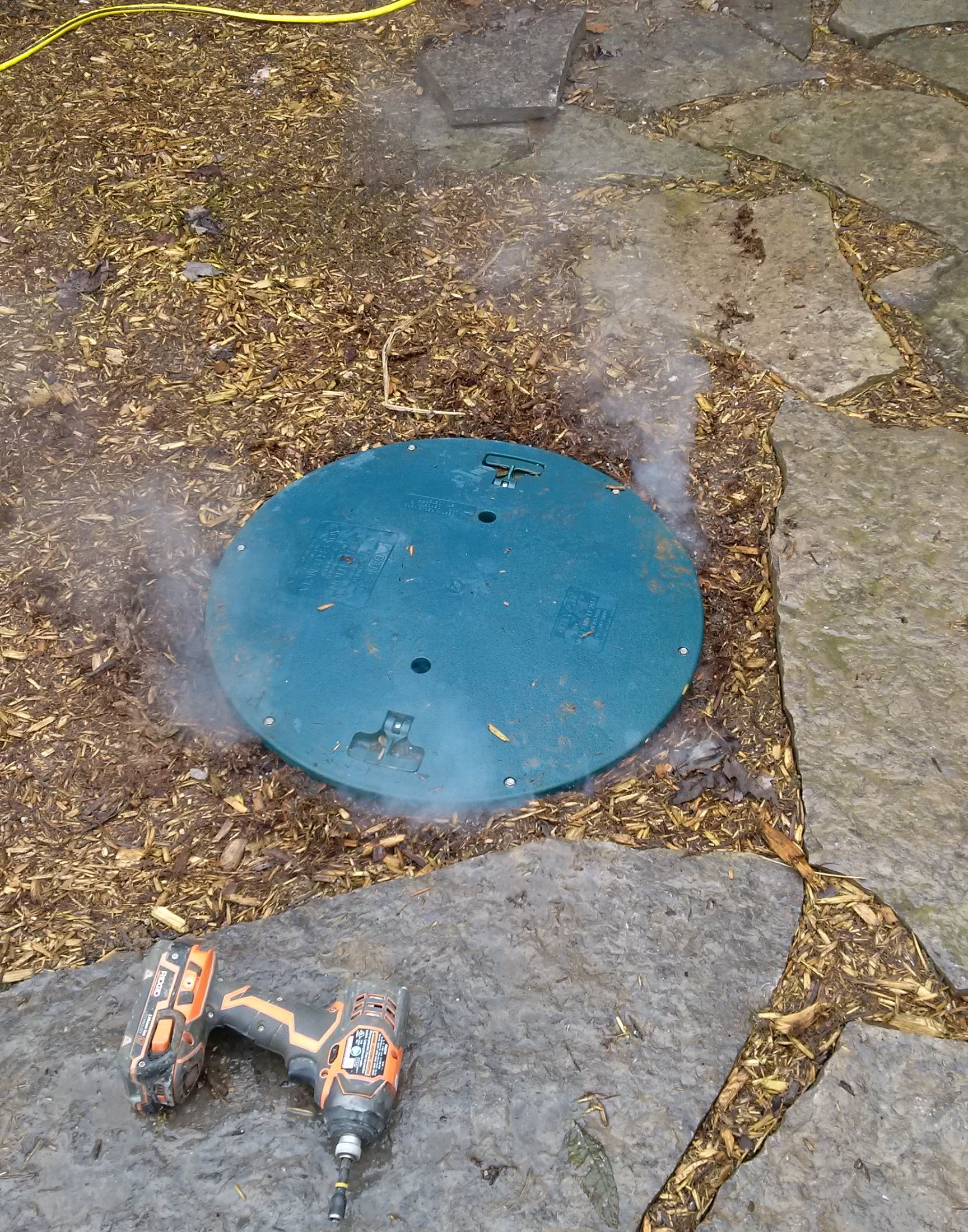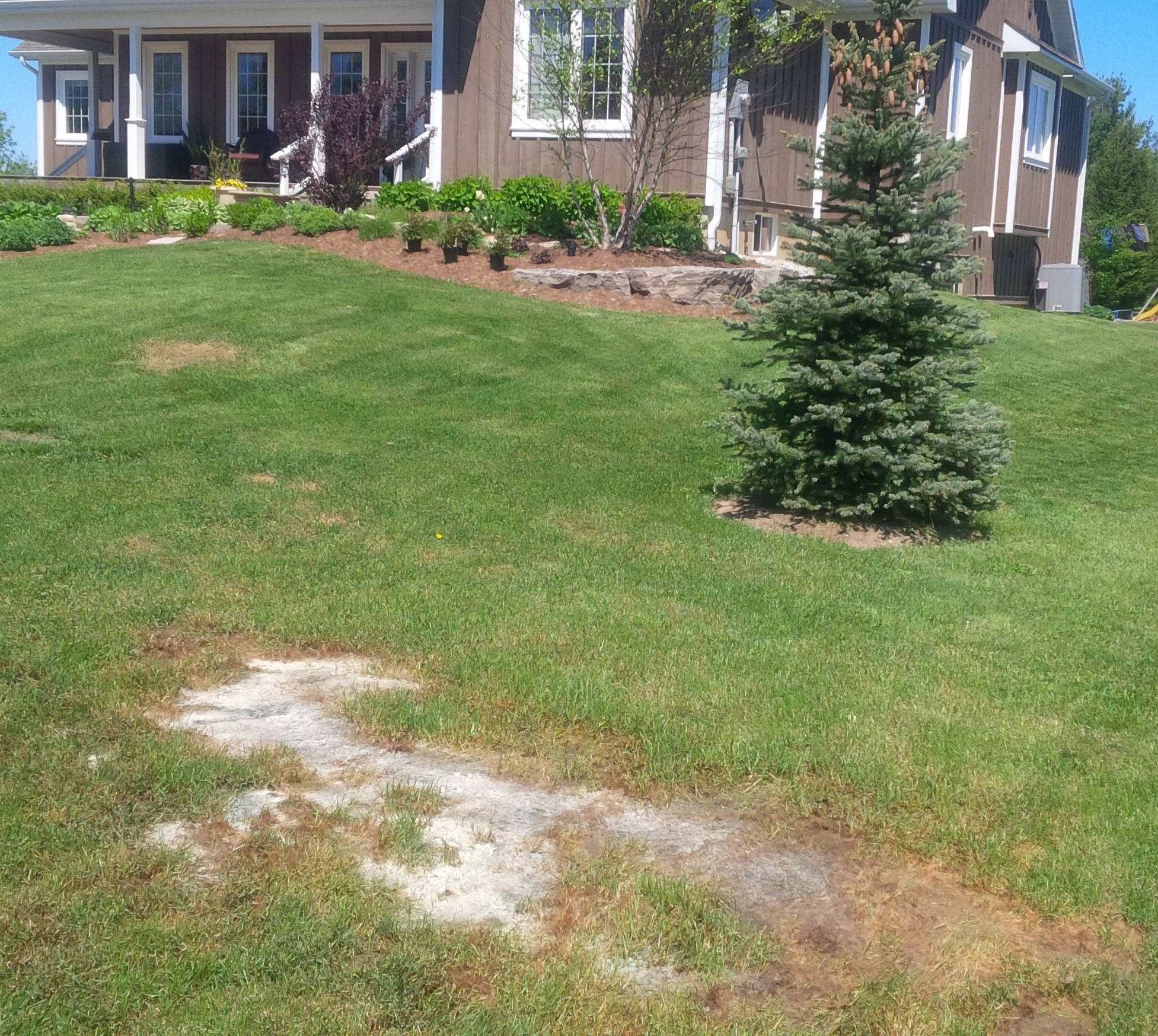Signs of Septic System Failure
Early warning signs of septic system failure include slow drains, gurgling, sewage odors outdoors, wet or soggy leaching beds, and control panel alarms. This guide explains what each sign means, common causes in Ontario systems, and the next steps to protect your home and meet OBC Part 8 requirements.
Common Indicators of Septic System Problems
1) Septic Tank Collapse
When a tank lid collapses, the system is unsafe and typically needs tank replacement (unless damaged by an external event like a vehicle). Septic gases can corrode older precast concrete above the waterline, weakening lids and access points over time.

Many older tanks are undersized by today’s standards and may lack filters or risers to grade. In most cases, replacing the tank is more practical than repairing isolated sections.
2) Slow Drainage & Gurgling
Toilets that flush slowly or fixtures that gurgle can indicate elevated tank levels or a developing blockage in the building sewer or outlet. A pump-out offers temporary relief and creates a safe condition for camera/locator diagnostics.
3) Sewage Odors Near the Tank or Leaching Bed
A healthy system should not smell. Persistent odors around the yard can indicate a blocked vent, overfilled tank or failing bed. Smoke testing helps trace the path of escaping gases to the true fault.

4) Wet or Soggy Areas in the Yard
Soggy patches without recent rain can indicate a saturated bed or damaged laterals. Partial restoration is sometimes possible by replacing clogged lines, correcting headers, and improving surface grading/drainage.

5) System Alarms
Modern systems use floats and panels to warn of high effluent levels, pump failure or power faults. An alarm means immediate attention is needed to prevent backups and protect the bed from hydraulic overload.
6) Seasonal Odors (Thaw & Heavy Rain)
Spring thaws and storms can raise groundwater, stressing marginal beds and causing intermittent odors indoors or in low spots outdoors. A pump-out can buy time while a long-term plan (restoration or replacement) is designed.
Next Steps
- Pump the tank to stabilize levels and enable safe diagnostics.
- Camera & locate the line to find breaks, roots or sags.
- Assess the bed (headers/laterals, grading, groundwater).
- Decide on repair vs. replacement based on soil conditions and code.
When you’re ready for hands-on help, head to Septic Repair for same-day scheduling. For a full primer on systems and components, visit our Septic Overview.
FAQs
What causes septic system failure?
Common causes include undersized/aging tanks, clogged or broken lines, saturated or compacted leaching beds, high groundwater, and missing maintenance (filters, pumping). Winter/spring water tables can also push marginal systems over the threshold.
Can a failing septic system be repaired?
Often, yes. Targeted repairs—such as header re-balancing, lateral replacement, drainage improvements and pump/electrical fixes—can extend life. When soils, setbacks or structure limit repairs, we design an OBC Part 8–compliant replacement.
Talk to a Licensed Installer
Describe your symptoms and we’ll triage the fastest fix.
